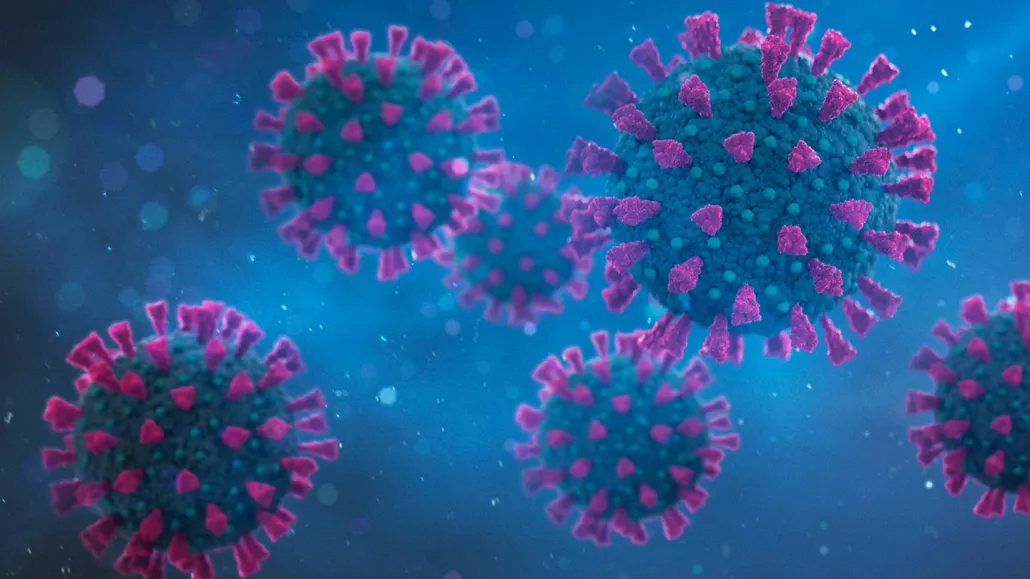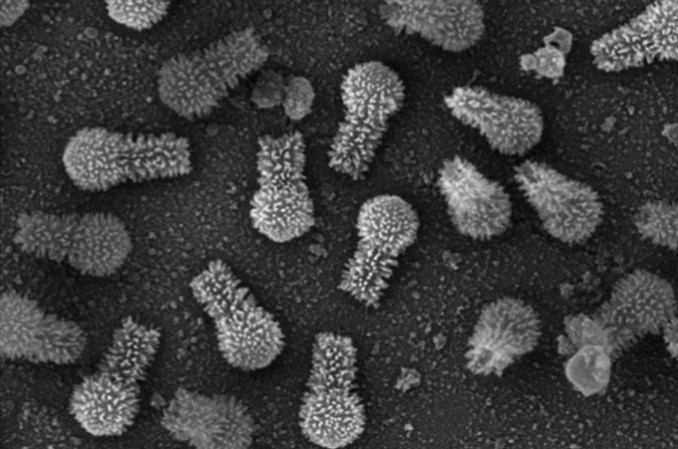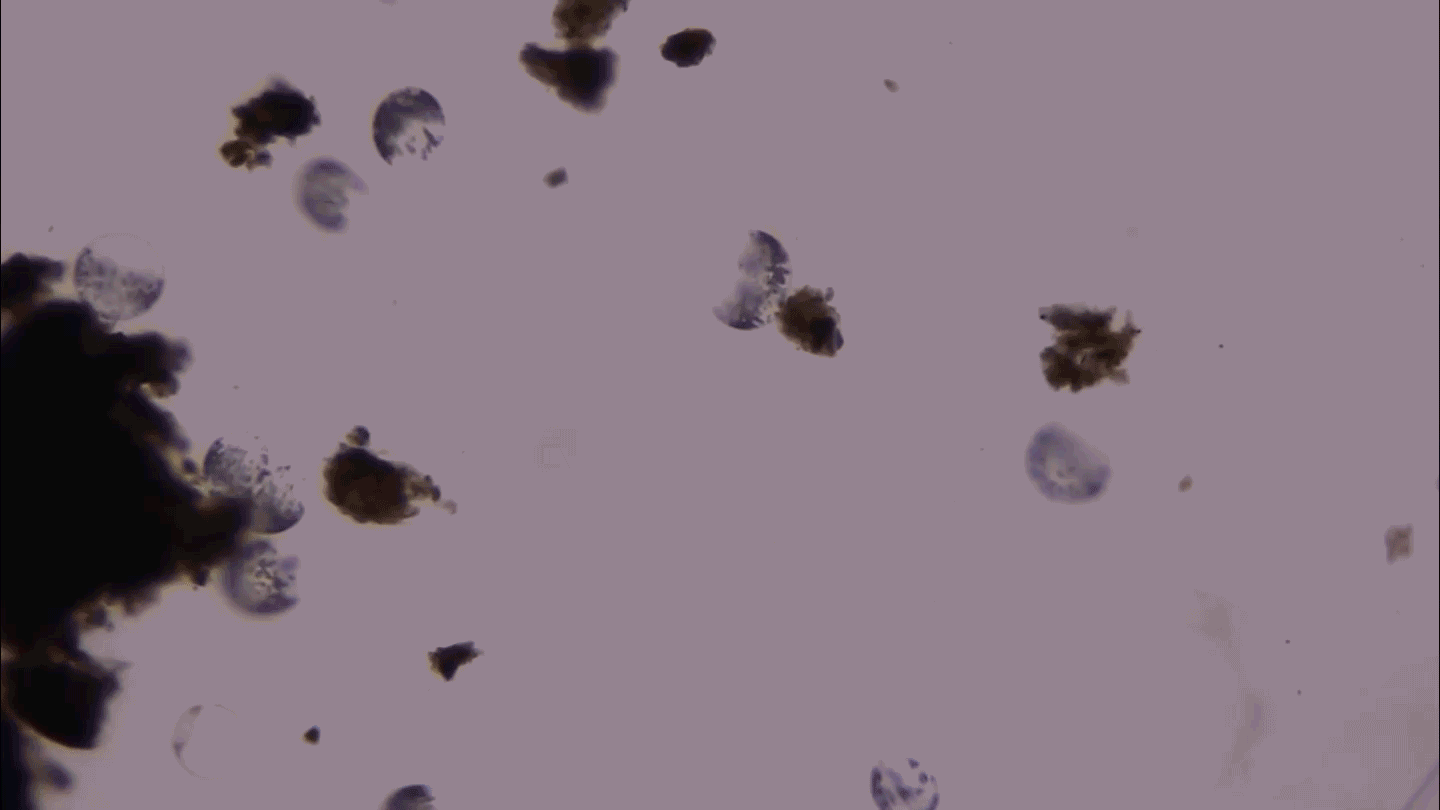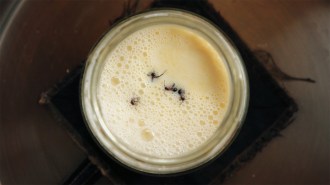Are viruses alive, not alive or something in between? And why does it matter?

We frequently talk about how to kill the coronavirus, but by most definitions, viruses aren’t alive.
Yuichiro Chino/Moment/Getty Images
- More than 2 years ago
Villain. Killer. Menace. Since 2020, scientists and public officials have used these words to describe SARS-CoV-2, the virus that causes COVID-19. News articles, research papers and tweets repeatedly personify the virus as a bad guy intent on killing us.
Simultaneously, we’re intent on killing it, with handwashing, antiseptic wipes, hand sanitizer, bleach, even robots zapping hospital rooms with ultraviolet light. Yet, according to most scientists, we’ve been working hard to kill something that isn’t alive.

To celebrate our 100th anniversary, we’re highlighting some of the biggest advances in science over the last century. For more from the series, visit Century of Science.
Scientists have argued for hundreds of years over how to classify viruses, says Luis Villarreal, professor emeritus at the University of California, Irvine, where he founded the Center for Virus Research. In the 1700s, viruses were believed to be poisons. In the 1800s, they were called biological particles. By the early 1900s, they’d been demoted to inert chemicals.
Throughout, viruses have rarely been considered alive. More than 120 definitions of life exist today, and most require metabolism, a set of chemical reactions that produce energy. Viruses do not metabolize. They also don’t fit some other common criteria. They do not have cells. They cannot reproduce independently. Viruses are inert packages of DNA or RNA that cannot replicate without a host cell. A coronavirus, for example, is a nanoscale sphere made up of genes wrapped in a fatty coat and bedecked in spike proteins.
Still, viruses have many traits of living things. They are made of the same building blocks. They replicate and evolve. Once inside a cell, viruses engineer their environment to suit their needs — constructing organelles and dictating which genes and proteins the cell makes. Recently discovered giant viruses — which rival the size of some bacteria — have been found to contain genes for proteins used in metabolism, raising the possibility that some viruses might metabolize.
Sign up for our newsletter
We summarize the week's scientific breakthroughs every Thursday.
Plus, almost every rule that excludes viruses from the land of the living has its own exceptions. For example, Rickettsia bacteria are classified as living but, like viruses, can multiply only within other cells. All living things, in fact, rely on other living things. A single rabbit cannot replicate on its own, but a rabbit is definitely alive, right?
For these reasons and others, the debate over whether viruses are alive or not continues today. In 2004, virologists Marc H.V. Van Regenmortel of the University of Strasbourg in France and Brian Mahy, then at the U.S. Centers for Disease Control and Prevention, defined viruses as “nonliving infectious entities that can be said, at best, to lead a kind of borrowed life.”
Or maybe a virus can be both nonliving and alive. In 2011, biologist Patrick Forterre of the Pasteur Institute in Paris argued that viruses alternate between an inactive state (outside a cell) and a living, metabolically active state (inside a cell) that he calls the virocell.
For Forterre, viruses are like seeds or spores. They have the potential for action and that potential can be extinguished. That, at least, jibes with our experience of investing endless time and money trying to kill HIV, Zika, SARS-CoV-2 and many more.

While debates over classification can at times feel frivolous, in reality how we talk about viruses affects how they are researched, treated and eradicated.
Personifying viruses as villains and menaces interferes with a real understanding of evolution and nature, says Colin Hill, an infectious disease specialist at University College Cork in Ireland. The most successful viruses are persistent and benign; they remain dormant in cells or reproduce slowly, so as to not damage a cell’s replication machinery. “Viruses and their prey are not fighting, they’re dancing,” says Hill. Yet that’s rarely how we perceive them.
What’s more, since viruses are frequently classified as nonliving, many types of viral infection — especially when viruses successfully colonize a host in a persistent, lifelong manner without causing acute illness — are ignored as “backwater” science, says Villarreal. “Think of it like having dirt on your shoe,” he says. Like that dirt, some scientists consider persistent viral infections as simply a nuisance and therefore not urgent to study. For example, a DNA virus called polyomavirus is commonly used in laboratories to study how viruses cause cancer. Yet because the virus’s rhesus macaque hosts seldom, if ever, get tumors from it, little is known about how and why polyomavirus persists in an animal population.
But understanding such infections is hugely important to humankind. “A persistent virus in one host is frequently quite nasty in another host, and that’s what we’re experiencing with COVID,” says Villarreal.
Viruses have been disregarded in other ways, too. Consider the tree of life, a model and research tool used to depict evolution through time. Viruses are routinely left off, including in popular versions such as the Interactive Tree of Life. Without viruses, one cannot fully understand the mechanisms of evolution, says Hill.
“Viruses and their prey are not fighting, they’re dancing.”
Infectious disease specialist Colin Hill
Viruses are wildly abundant. They infect all cellular life, from single-celled bacteria to elephants, and they are especially dense in the ocean, where they work as a gigantic recycling network, ripping apart 20 percent of the bacteria and other microbes there each day to release tons of carbon, which is then used by other microorganisms to grow.
Across the globe, viruses don’t just infect cells, they leave behind genetic material. Viral DNA is transmitted not only from one viral particle to its progeny, but also to other viruses and other species. Because of this, viral genetic sequences have permanently taken up residence in the genomes of all organisms, including ours, and we rely on them. Viral DNA is required for the formation of the mammalian placenta; it is crucial in the growth of early embryos; and the human innate immune system is made up, in part, of ancient viral proteins. When a person is fighting COVID-19, they are doing it with the help of viruses that colonized our cells long ago.
In fact, some scientists consider viruses to be the world’s leading source of genetic innovation. Viruses are not a missing branch of the tree of life; they are woven into every limb and leaf.
Scientists may always dispute whether viruses are alive or not, but they can hopefully agree on the importance of viruses to life as we know it. “However you want to think about life,” says Villarreal, “viruses are going to be there.”

Trustworthy journalism comes at a price.
Scientists and journalists share a core belief in questioning, observing and verifying to reach the truth. Science News reports on crucial research and discovery across science disciplines. We need your financial support to make it happen – every contribution makes a difference.







